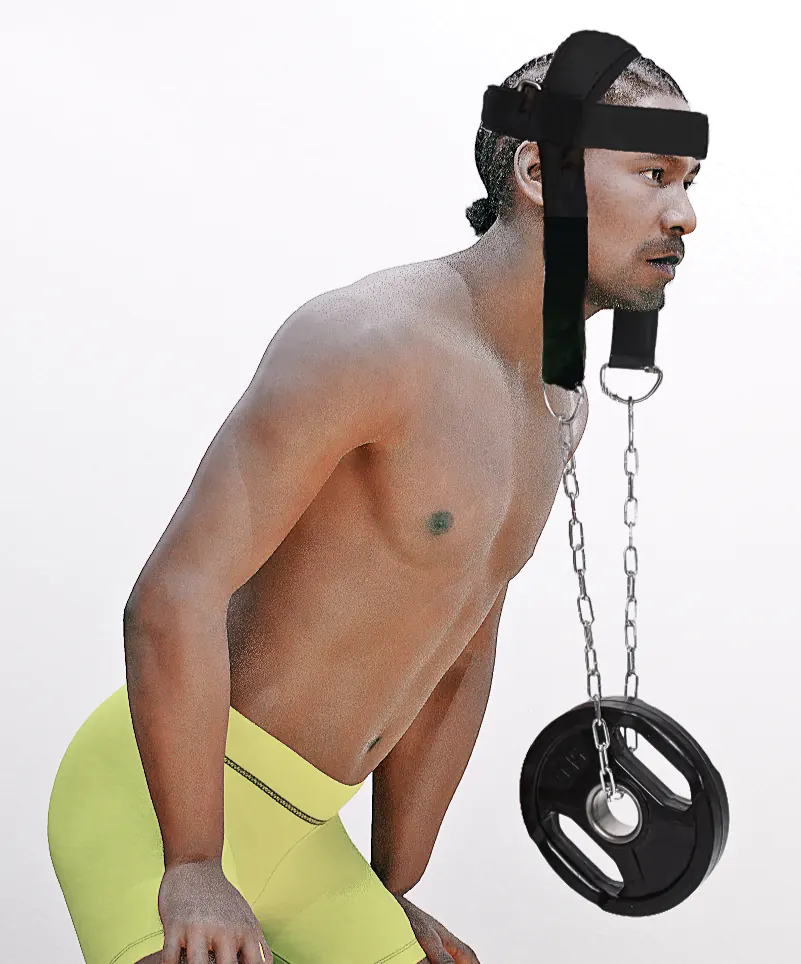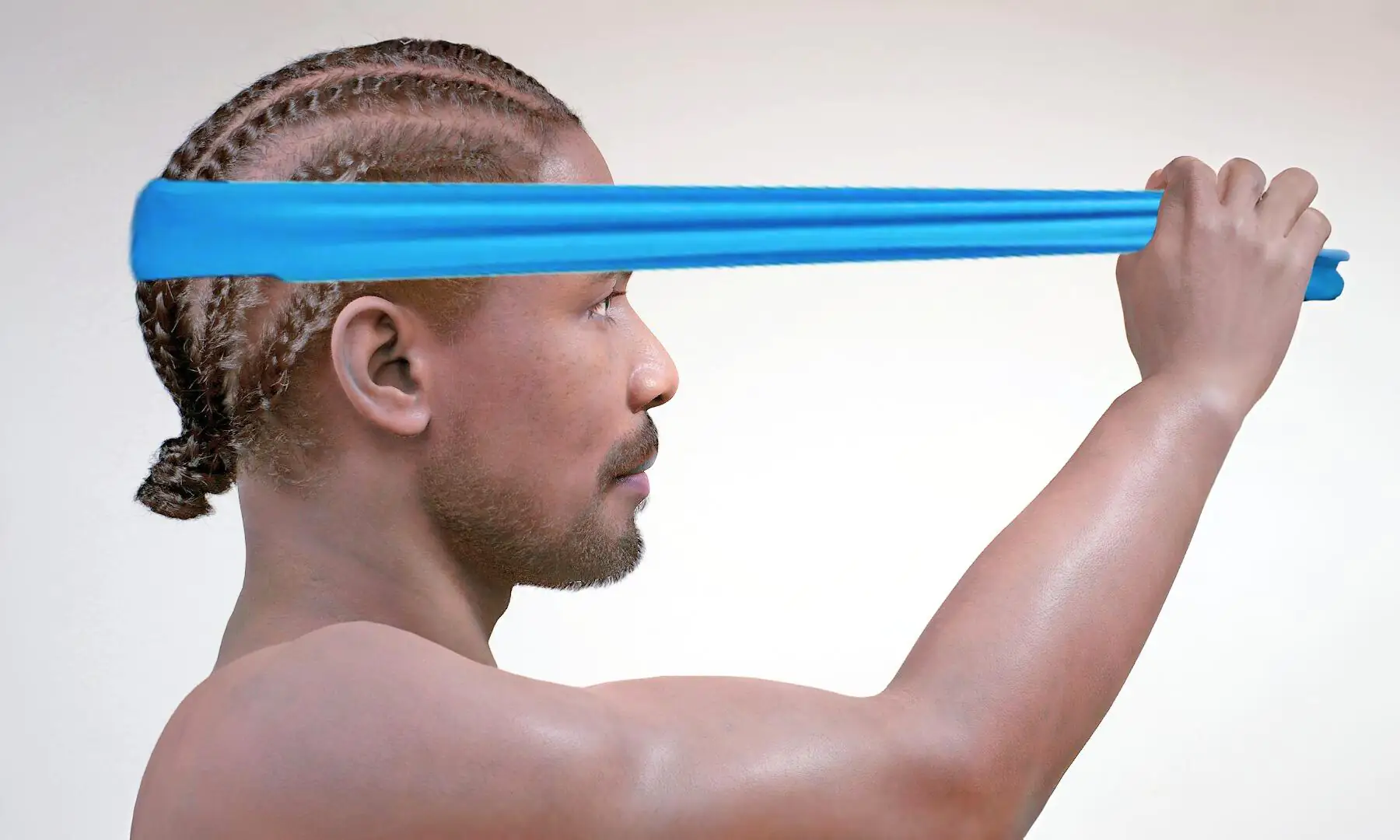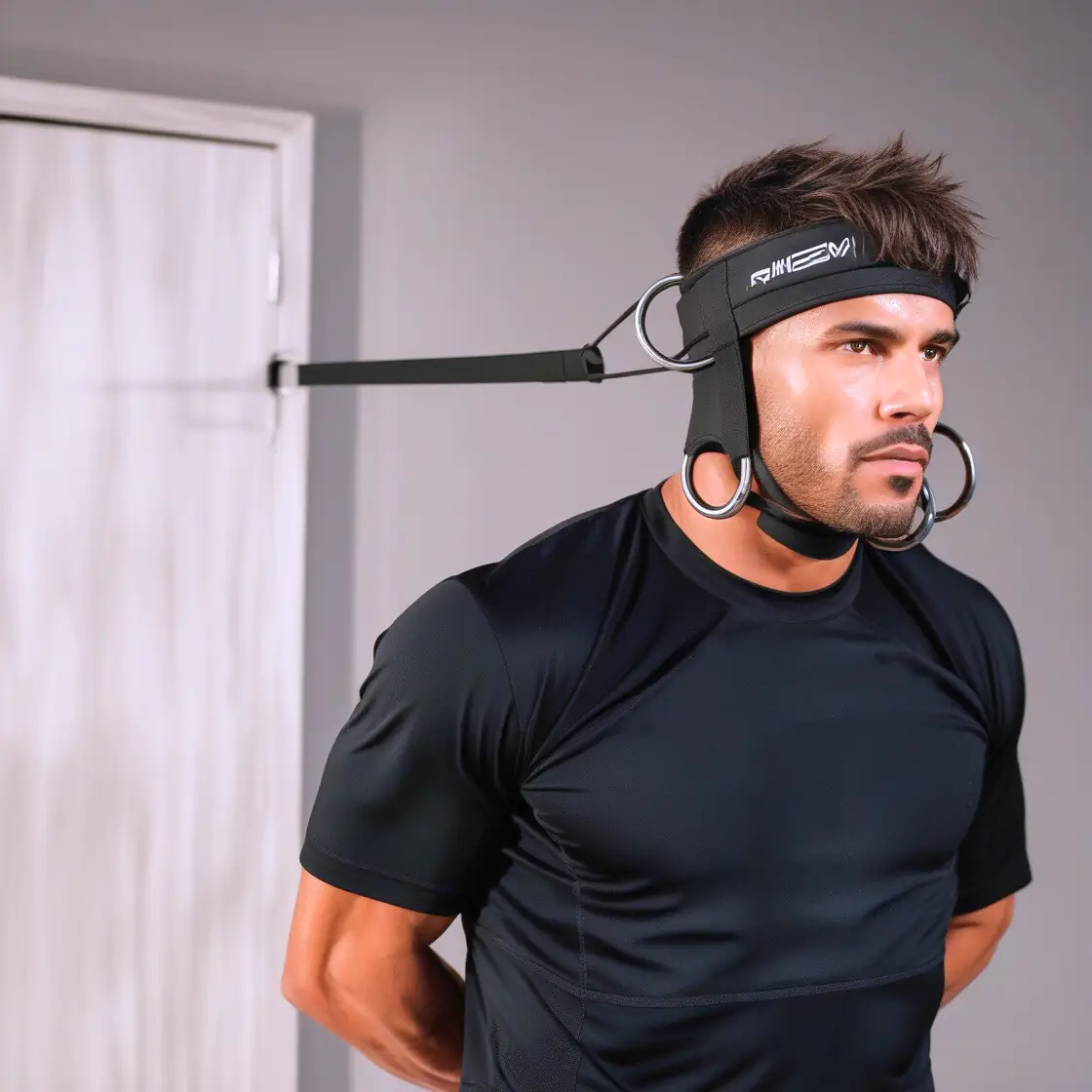Neck health often slips under the radar in wellness discussions, but its importance cannot be overstated. A neck trainer is a versatile tool designed to enhance neck strength, mobility, and posture. While often marketed towards athletes, neck trainers are vital for everyone—students, office workers, professionals, fitness enthusiasts, and anyone who recover from injuries. In this article, we’ll explore neck trainers, their benefits, and how you can integrate them into your daily routines.
Why Is Neck Training Important?
The neck doesn’t just support the head. Its health and alignment also shape how we feel every day. Neglecting the neck can lead to issues like neck pain, stiff neck, or even a pinched nerve in the neck. A strong, healthy neck can boost our effectiveness in daily tasks, improve mood, and even sharpen focus.
-
Stability and Injury Prevention
Strong neck muscles provide essential support for daily movements, sports, and posture. A stable neck reduces strain and prevents cervical instability, making everyday tasks and athletic performance safer. Whether lifting, turning, or reacting quickly, a well-trained neck lowers the risk of injuries.
-
Circulation and Nervous System Function
Bad posture, weak or strained neck muscles can compress blood vessels and nerves, leading to discomfort, reduced mobility, and brain fog. Proper neck alignment and trained neck keep blood flowing freely, delivering oxygen and nutrients to the brain1. These boost focus and sharpen thinking. It also ensures well communication between the brain and the rest of the body, supporting nervous system function. Strengthening the neck helps maintain spinal health, improving daily function and overall well-being.
-
Modern Challenges and Neck Alignment
Screens dominate daily life, leading to tech neck, poor posture, and discomfort. Training the neck strengthens muscles, counteracts strain, and improves alignment. Regular neck training helps prevent long-term issues caused by excessive screen use.
-
Eased Tension and Better Sleep
Neck pain and stiffness can trigger headaches and disrupt sleep. Strengthening the area relieves tension, easing pain and promoting restful sleep2. A relaxed neck leads to better recovery and overall well-being.
-
Aesthetic Appearance
Forward head posture, neck hump, and sagging skin (“turkey neck”) can result from weak muscles and poor posture. Neck training improves tone, creating a stronger, more defined look while preventing sagging.
-
Brighter Mood
There are studies that have established a link between forward head posture and depression3. A pain-free, healthy neck supports better posture, clearer thinking, quality sleep, and a confident appearance. All these factors contribute to an improved mood, boosting daily energy and self-assurance.
Investing in neck training isn’t just about strength—it’s a step toward long-term health, comfort, and confidence.
What is a Neck Trainer?
A neck trainer is a fitness device designed to strengthen neck muscles, improve neck mobility and posture. This is achieved through various neck stretches and neck strengthening exercises while using the neck trainer. The choice of these exercises varies depending on the design and capabilities of the trainer.
Neck trainers address the needs of adults across all ages, especially those with sedentary lifestyles, neck strain from work, or frequent use of books and screens. Neck trainers are especially relevant for athletes engaged in high-impact sports like football, wrestling, and martial arts, where strong neck muscles can reduce the risk of injury. Fitness enthusiasts also use neck trainers as part of their overall workout routines to achieve better alignment and avoid stiffness. In addition, these tools are crucial in rehabilitation for those recovering from neck injuries, aiding their journey back to mobility and strength.
Why Use a Neck Trainer?
Some people try to train their necks using towels, plates, or other simple tools. While this might seem like a good idea, it has limits—safety and effectiveness are always in question. A neck trainer is built specifically for controlled, reliable training, offering support and precision that improvised methods simply can’t.
As fitness continues to evolve, neck trainers are part of that progress. The neck is finally getting the attention it deserves, and specialized devices make proper training easier and safer. Designed with anatomy, safety, and efficiency in mind, neck trainers can be a game changer. They provide a structured way to build strength, flexibility, and resilience while minimizing risks.
Of course, not all neck trainers are created equal. Below, we’ll explore the different types, their advantages, and potential drawbacks.
Types of Neck Trainers
Different neck trainers offer unique ways to strengthen and support the neck. Each type has its own pros and cons.
1. Neck Harness (with weight)
A neck harness fits around the head and attaches to a chain or strap that holds weights. It mainly targets the sternocleidomastoid and upper trapezius muscles, which play a major role in neck flexion, extension, and lateral movement. While it does engage other smaller stabilizing muscles, they are not effective for working deeper cervical muscles.
Workout Load Control
Using weights allows control over the workout load, which is good. However, even the lightest available weights may be too much for beginners or those with weaker neck muscles.
Limitations in Exercise Variety
Due to the design, the number of exercises you can do with a neck harness is very limited. It’s effective for strengthening the front (flexors) and back (extensors) of the neck. As for side movements, it might be hard to position the body correctly. While you can do lateral flexion, the range of motion is limited. Yet, performing rotational movements is barely possible.

Safety Considerations
You should be especially careful during neck training to avoid injuring yourself with weights. Applying force perpendicular to the spine causes compression of the vertebrae with 14 times greater force4. Such heavy loading isn’t needed for basic neck strengthening and can even be dangerous due to excessive stress on the cervical spine.
Who Should Use a Neck Harness?
The neck harness is often used by athletes, bodybuilders, and people involved in contact sports like wrestling or MMA. However, this may be overkill for people who aim to improve neck health or strengthen neck muscles.
2. Handheld Resistance Band (with and without headgear)
This is a simple hand-held resistance band, some featuring headgear for added comfort. The workout involves placing the band on the head, holding the other end with your hands, and stretching it by adjusting the head’s position.
Limitations of Resistance Bands
While resistance bands come in a wide range of strengths, setting a precise force isn’t possible. This is because the force varies at different stretching points and depends on grip position. So, the stated strength of a band only gives you a rough idea. However, you can still adjust the strength as you progress based on your subjective feelings.

Exercise Restrictions
Holding the band during neck training limits the number of exercises you can perform. For example, training the front (flexors) of the neck isn’t possible. Bands also aren’t great for neck rotation. In addition, holding the band with your hands makes it difficult to isolate the neck. Although this reduces the effectiveness of neck training, the pros are that you train your arms at the same time.
Potential Risks
Keep in mind that the band often slips off. This problem is solved in neck trainers where the band is attached to the headgear. Compression of the cervical vertebrae due to force applied perpendicular to the spine is also a concern. Resistance bands are less likely to cause neck strain. However, you should be careful, as they might slip out of your hands and cause injury.
Despite these downsides, resistance bands remain a popular method of neck training. They are low-cost, portable, and you probably have at least one at home.
3. Harnesses with resistance band attached to a wall or door
You overcome the resistance of the band directed perpendicular to the axis of the spine while performing controlled movements. This allows you to strengthen the muscles of the neck and shoulder girdle.
Benefits of This Design
This type of neck trainer avoids the downsides of the previous type. The resistance band is securely attached to the neck harness or headgear, and your hands remain free. This provides a more effective and comfortable neck workout.
Potential Concerns
However, compression of the cervical vertebrae due to force applied perpendicular to the spine is a concern. Keep in mind that a heavier load increases compression of the vertebrae by the neck muscles.

Exercise Options
This design allows you to perform a limited number of resistance exercises. However, it may be enough for basic strengthening of the neck muscles. To train different neck muscles, you need to change where the band attaches to the harness. While the most advanced designs allow full 360° rotation with the band stretched, they also come at a higher cost.
Adjusting Resistance
You can set the tension by choosing a band of different resistance. You can also adjust the load by moving farther or closer to the anchor point. Although the force set in this way may not be exact, it will give you a guide.
Maintaining proper body position and alignment when using this neck training tool is key.
4. Bejoyland Neck Trainer: strengthening, stretching, decompression
Bejoyland NECKY is a next-gen neck trainer. It consists of an adjustable neck harness, a precise resistance band, and a traction line. It is easily attached to a door or hook in the wall. Unlike other neck trainers, the resistance force is directed vertically along the spine’s axis, preventing vertebra compression during most exercises and greatly reducing it during others. This ensures greater training safety and promotes neck alignment.
Customizable Resistance
Bejoyland NECKY allows you to set a precise traction force from 1 to 10 lbs, which is more than enough to strengthen and grow the neck muscles. You can adapt the force to your level and increase the load as your muscles strengthen. This training approach is especially important for those with weakened neck muscles.
Comfortable Training and Natural Movement
The training takes place while sitting on a chair, allowing you to focus entirely on neck muscles. The hands remain free, and natural head movement is fully maintained, enabling a wide range of neck-strengthening and stretching exercises, including advanced PNF techniques. Thanks to this, Bejoyland activates every neck muscle, including deep, hard-to-reach areas.

Gentle Neck Decompression
The training takes place while sitting on a chair, allowing you to focus entirely on neck muscles. The hands remain free, and natural head movement is fully maintained, enabling a wide range of neck-strengthening and stretching exercises, including advanced PNF techniques. Thanks to this, Bejoyland activates every neck muscle, including deep, hard-to-reach areas.
As a result, Bejoyland NECKY is a highly effective, comfy, and safe tool for neck training. You can learn more about it here.
Tips for Safe Neck Training
Proper technique is crucial for preventing injuries during neck workouts. Follow these tips to stay safe:
- Expert guidance: Consult a healthcare provider before starting training.
- Smart choices: Rather than falling for marketing strategies, choose a neck trainer that suits your needs and fitness level.
- Body awareness: Always maintain correct posture while exercising.
- Start small: Begin with light resistance or weight and fewer repetitions to progress gradually.
- Listen to your body: Stop training immediately if you feel any discomfort or pain.
With these simple precautions, you’ll get the most out of neck training while staying safe.
Conclusion
Maintaining neck health is essential for overall well-being, posture, and performance. Whether you’re an athlete, office worker, or recovering from an injury, proper neck training can enhance strength, mobility, and stability, preventing long-term issues.
Investing in the right neck trainer ensures safe, effective, and controlled workouts tailored to your needs. By integrating neck training into your routine and following safety precautions, you can improve alignment, resilience, and daily function. Choosing a training method that suits your needs ensures long-term benefits, keeping your neck strong and pain-free for years to come.
References
- Evan A Katz, Seana B Katz, Curtis A Fedorchuk, Douglas F Lightstone, Chris J Banach, Jessica D Podoll. Increase in cerebral blood flow indicated by increased cerebral arterial area and pixel intensity on brain magnetic resonance angiogram following correction of cervical lordosis. Brain Circ. 2019 Mar 27;5(1):19–26.
- Myung Kyung Lee, Jihyun Oh. The relationship between sleep quality, neck pain, shoulder pain and disability, physical activity, and health perception among middle-aged women: a cross-sectional study. BMC Womens Health. 2022 May 21;22:186
- Ju-Yeon Jung, Yeong-Bae Lee, Chang-Ki Kang. Effect of Forward Head Posture on Resting State Brain Function. Healthcare (Basel). 2024 Jun 7;12(12):1162.
- Chih-Hsiu Cheng, Andy Chien, Wei-Li Hsu, Carl Pai-Chu Chen, Hsin-Yi Kathy Cheng. Investigation of the Differential Contributions of Superficial and Deep Muscles on Cervical Spinal Loads with Changing Head Postures. PLoS One. 2016 Mar 3;11(3):e0150608
